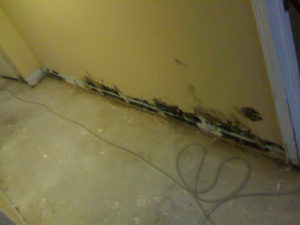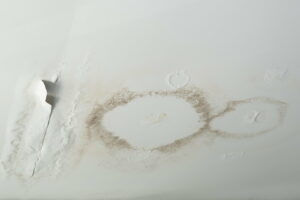Stains from Water on Wall Surfaces: Checking and Repairing Processes
Stains from Water on Wall Surfaces: Checking and Repairing Processes
Blog Article
Here in the next paragraph you can find a good deal of awesome information pertaining to How to Remove Water Stains from Walls and Ceilings.

Water discolorations on walls are not enjoyable to the eyes. Your house needs to be without stains on the walls, roofing, or floorings. That is the ideal state of a house as well as its structures. Yet, in some cases it appears virtually unavoidable to experience water stains on walls in residences.
House owners living in humid regions regularly deal with the anxiety of water discolorations on wall surfaces. With exact and also all-around information on the reasons of water spots and prompt fixing processes, you will constantly be an action ahead of such events.
3 Typical Causes of Water Spots on Wall Surfaces
In contrast to common belief, water spots on wall surfaces do not constantly come from poor building materials. There are a number of reasons for water stains on walls. These consist of:
Poor Water drainage
This will protect against water from permeating right into the walls. This links to too much dampness that you observe on the wall surfaces of your structure.
The leading reason of wet walls, in this instance, can be an inadequate drain system. It can also result from bad management of sewer pipelines that go through the structure.
Damp
When hot moist air meets with dry chilly air, it creates water beads to base on the walls of buildings. When there is steam from food preparation or showers, this takes place in kitchen areas and also bathrooms. The water droplets can stain the surrounding walls in these parts of your home and spread to various other locations.
Wet or condensation impacts the roofing as well as walls of buildings. This causes them to show up darker than various other areas of the home. When the wall surface is wet, it develops an appropriate environment for the growth of fungis and microbes. These might have negative results on health, such as allergies as well as respiratory system disorders.
Pipeline Leaks
Most houses have a network of water pipes within the walls. It constantly increases the practicality of such pipelines, as there is little oxygen within the walls.
Yet, a drawback to this is that water leakage affects the wall surfaces of the structure and creates widespread damage. A telltale sign of damaged pipelines is the look of a water stain on the wall.
Water Stains on Wall: Repair Tips
Property owners would typically desire a quick fix when dealing with water stains. They would certainly quickly realize this is counterproductive as the water discolorations repeat. Below are a couple of valuable pointers that will direct you in the repair service of water discolorations on walls:
Pro Suggestion
A houseplant in your house additionally boosts its humidity. If the house is currently moist, you may want to introduce houseplants with minimal transpiration. An instance of appropriate houseplants is succulents.
Conclusion
No one wants to have water spots on walls in their house, it can occur to the best of us. This post gives you utilize, as you currently know exactly how to manage this mishap if it does occur.
It is constantly best to hire professional services to aid take care of the problems in your home.
Often it appears nearly inevitable to experience water spots on wall surfaces in residences.
In contrast to popular belief, water stains on wall surfaces do not constantly stem from inadequate structure materials. There are a number of reasons of water spots on walls. The water droplets can stain the surrounding wall surfaces in these parts of your residence and spread to other areas.
Here are a few handy tips that will guide you in the repair of water stains on wall surfaces:
How to identify and deal with water spots on walls and ceilings
Where is water coming from?
Where is the water coming from? Is the roof above it? Or how about a bathroom? Potentially a leaky pipe? Whatever is up, it’s wet. Repairs cannot be attempted until the source is identified and the necessary repairs made. Otherwise, repairs are moot. The water stain will just come back.
Many times the repair is simple. A common source is water seepage. A shower pan or piping that once had be caulked could have sprung loose causing a slowly leaking pipe. Address potential piping issues before proceeding.
If it’s the roof that’s up, check it for leaks. Roof water is not always attributed to a roof problem. Depending where in the country you are located, you could be looking at an ice dam, which means new insulation and repairs. Roofs can leak, shingles can slip. Again, the repairs must be made before any patch work can happen inside.
Why is there a water spot?
Water stain repairs always come last. Repairing a water stain inside your home before addressing the issue is going to lead to disappointment. Repairs will quickly be taken apart by a continuous leak. You will need to see how wet the area actually is. Potentially, you could be looking at taking out a piece of the ceiling or drywall to get down to a dry bones before moving forward. If you neglect this step, you are sure to have bleed through on the repair.
How to go about fixing the problem?
Clean.
Once the underlying cause of the stain is dealt with, you can begin by cleaning the stain with bleach. Mix one cup of bleach with three cups of warm water and wipe the wall down. This mixture will also remove any leftover mildew, dirt or dust that could prevent a good paint job. Rinse the solution off with a spray bottle and towel.
Prep.
Get a drop cloth set up on the floor below your project. If the mess is on a ceiling, protective gloves and goggles will be crucial. After the area is dry, tape off any areas, like trim, you want to keep paint-free.
Prime.
Use a good quality base coat of stain-blocking primer. Your ceiling is probably painted with an interior latex paint, meaning it is water soluble. Water will destroy this kind of paint and cause lingering issues with your job. The base coat will block this from happening again in the future.
Paint.
After ample drying time, apply at least two coats of ceiling paint, with drying time in between. Oil-based ceiling paints will contain more volatile organic compounds (VOCs) and fumes, so take precautions not to expose yourself to this paint for too long.
Your ceiling should look pristine a new. Provided the problem has been completely solved, there will be no returning halo in your paint job.

I am very excited about Water Stains on Walls and I hope you liked the new post. Do you know about anybody else who is interested in the niche? Feel free to share it. Thanks a bunch for your time. Visit again soon.
Visit My Site Report this page